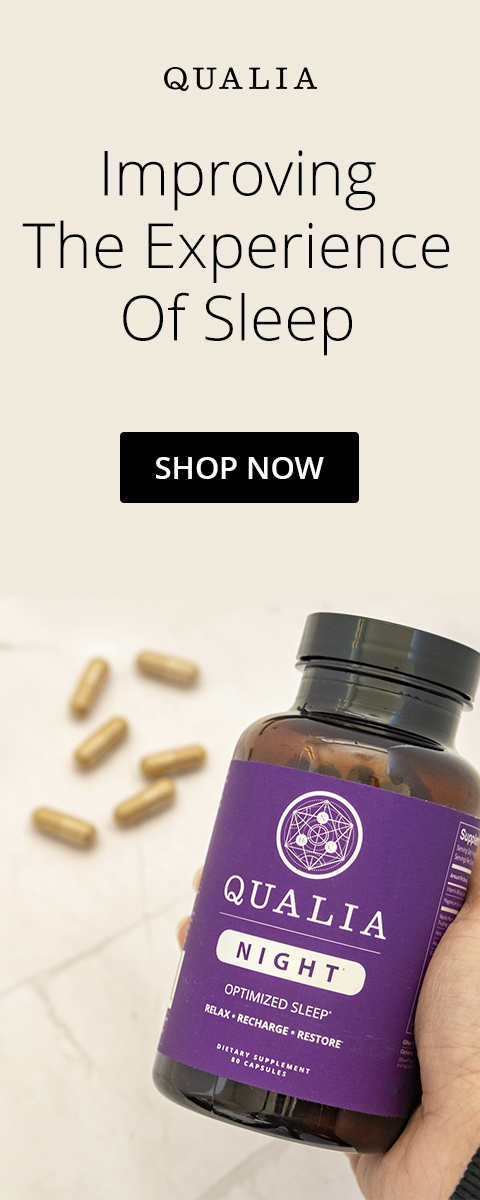L-tryptophan is an essential amino acid. This means the body cannot synthesize it: it must be obtained from the diet. It’s been known for decades that L-tryptophan has niacin equivalent activity in the body (i.e., we can make NAD+ molecules from it). L-tryptophan is unique because it’s the only way to build NAD+ that doesn’t start from vitamin B3. It does this by a de novo synthesis pathway, which creates a niacin molecule through a series of biological reactions. So, L-tryptophan’s inclusion would seem to be a natural fit in a formulation that wants to support boosting NAD+.
Does L-Tryptophan Make You Sleepy?
Our plan for the Qualia Life formulation was that it would be dosed during the day (ideally at breakfast). But, L-tryptophan isn’t only used as a niacin equivalent in the body. It can also be shunted in a different direction, where it’s instead used to build serotonin (a mood neurotransmitter) and after that melatonin (our darkness neurohormone).
The key question the Qualia science team felt they needed to answer before saying ‘yes’ to including L-tryptophan was: “What happens when L-tryptophan is dosed at breakfast?” In other words, will taking it at breakfast make someone feel sleepy or fatigued. The answer came from research where L-tryptophan-enriched breakfasts have been studied.
Increasing L-tryptophan at breakfast doesn’t make people sleepy after breakfast or during the day. Instead it has enhanced mood during the day and supported a more morning orientation of body clock function—both of these are healthy responses.* And, it’s also promoted an unexpected response (mostly because it is delayed).
At night when we go to bed, 12-14 hours after increasing L-tryptophan at breakfast, melatonin production and sleep efficiency have been enhanced.* This melatonin response at the tail end of the day to L-tryptophan at breakfast has been amplified when there’s also been exposure to about 10-minutes of morning sunlight (so consider the combination as additive and a good neurohack combination). The last thing to mention is the dose. It hasn’t required enriching breakfast with large doses of L-tryptophan; low-to-moderate doses have been sufficient.(1-6)
References:
1. T. Harada, M. Hirotani, M. Maeda, H. Nomura, H. Takeuchi, J. Physiol. Anthropol. 26, 201–207 (2007).
2. M. A. B. Veldhorst et al., Clin. Nutr. 28, 147–155 (2009).
3. M. Nakade et al., J. Physiol. Anthropol. 31, 11 (2012).
4. R. Bravo et al., Age . 35, 1277–1285 (2013).
5. K. Wada et al., J. Circadian Rhythms. 11, 4 (2013).
6. H. Fukushige et al., J. Physiol. Anthropol. 33, 33 (2014).
* These statements have not been evaluated by the Food and Drug Administration. The products and information on this website are not intended to diagnose, treat, cure or prevent any disease. The information on this site is for educational purposes only and should not be considered medical advice. Please speak with an appropriate healthcare professional when evaluating any wellness related therapy. Please read the full medical disclaimer before taking any of the products offered on this site.







No Comments Yet
Sign in or Register to Comment